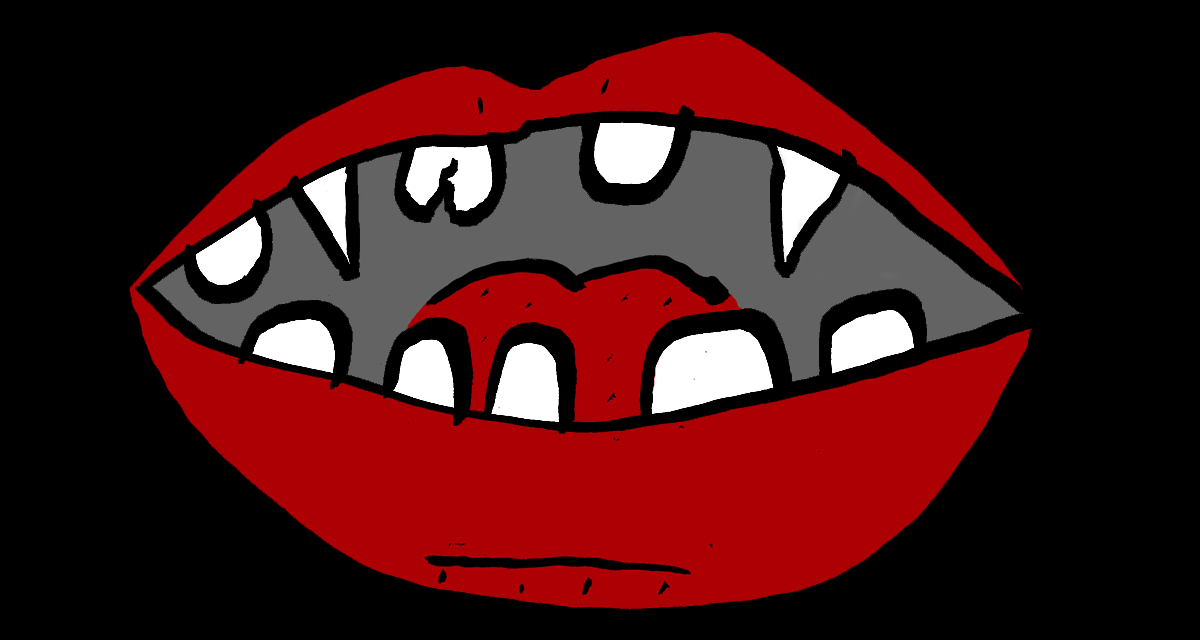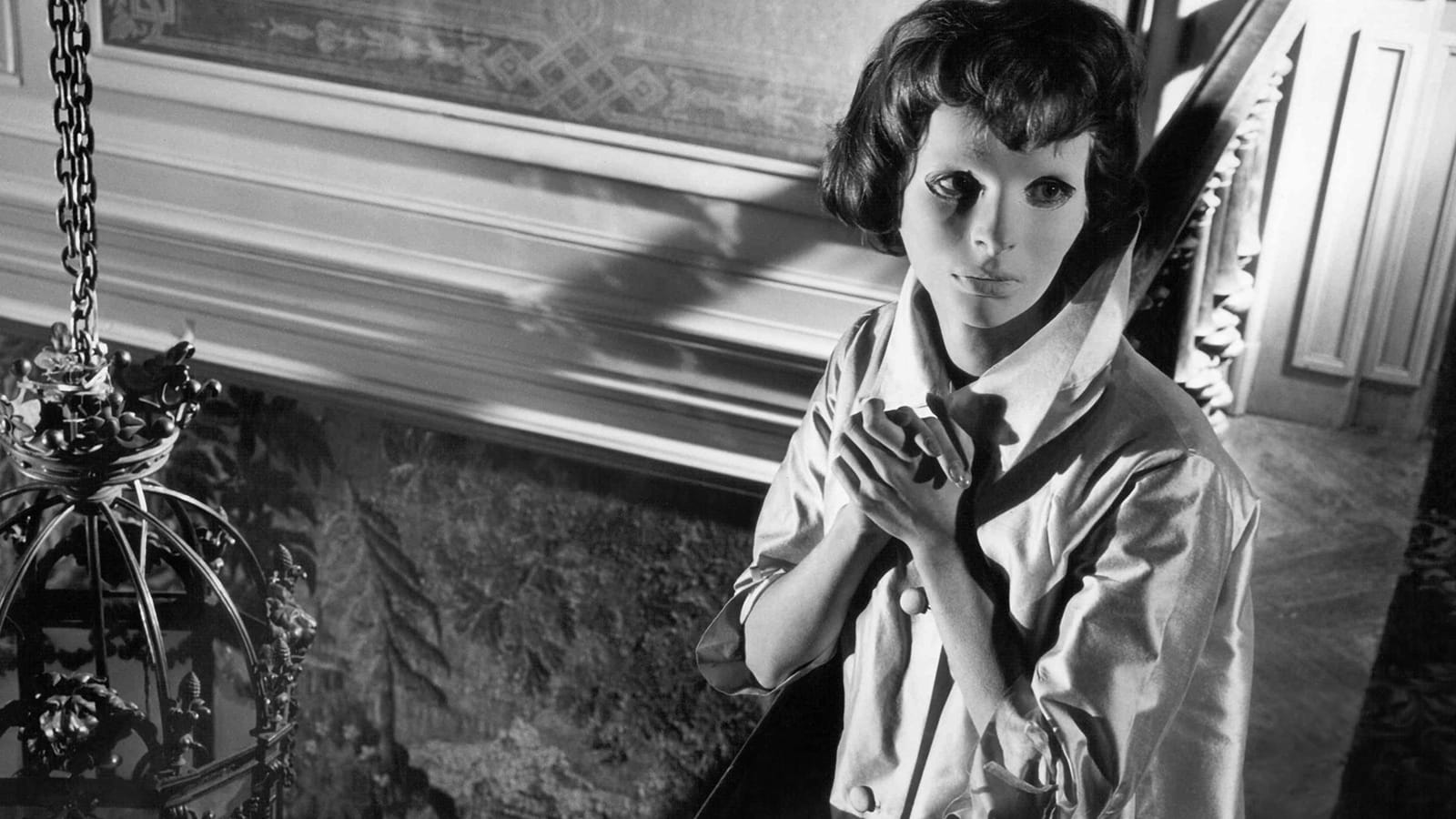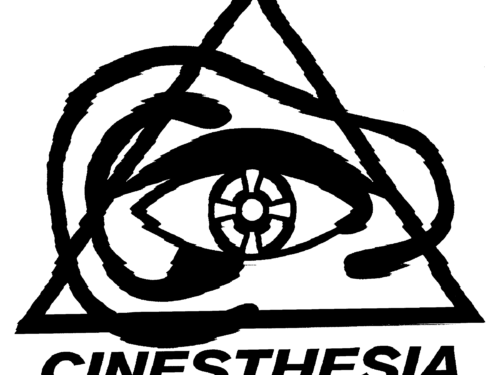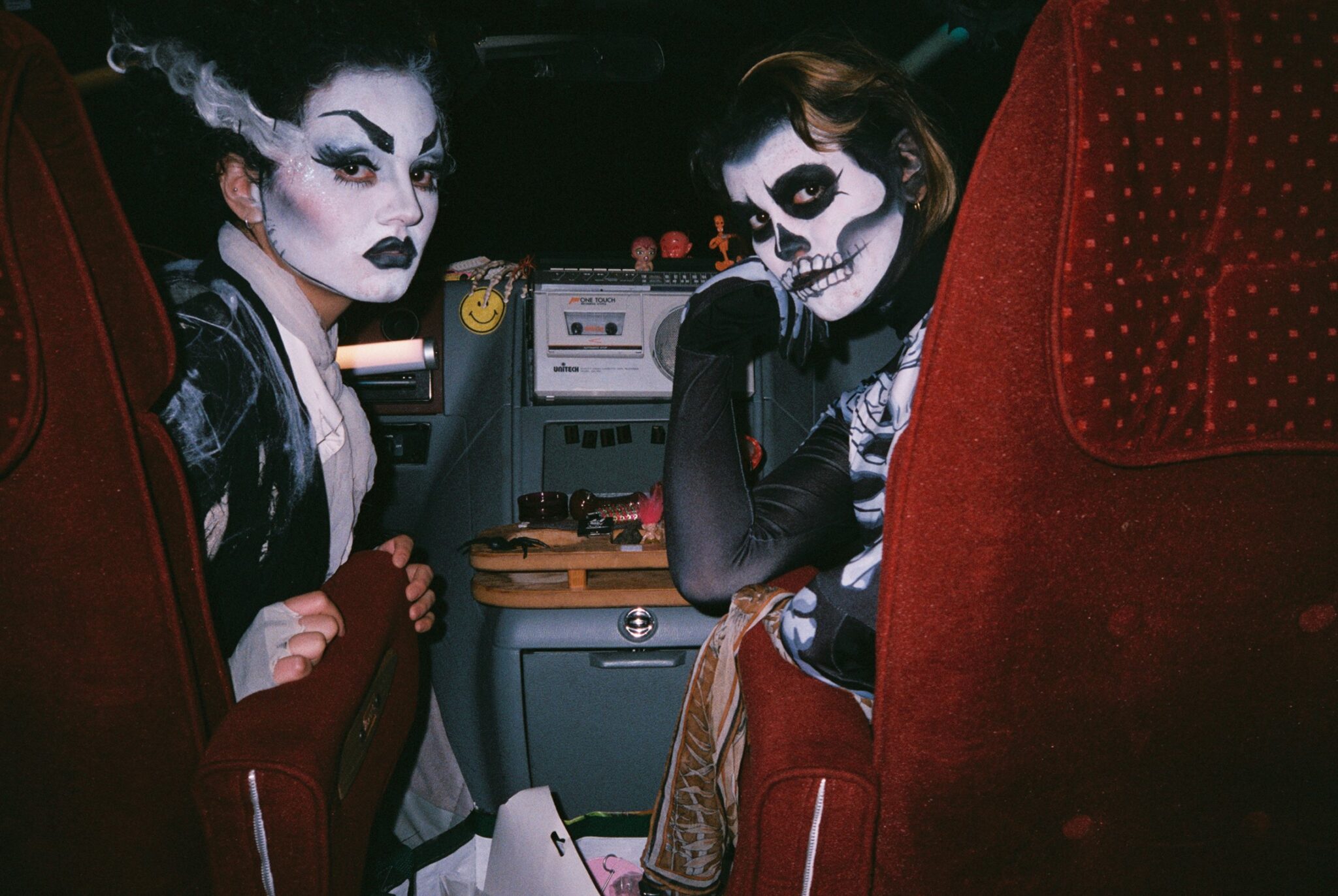Although it was misunderstood in its time, Eyes Without A Face has cast a long and wide-ranging shadow on culture since
When Eyes Without a Face came out in 1960, most people evidently didn’t know what to do with it.
It was released in France during the peak of the French New Wave, and it certainly didn’t count itself among that genre. Francois Truffaut’s The 400 Blows came out just months before, and another black-and-white domestic horror flick, Psycho, was released in the US a few months later. Eyes Without a Face must’ve confounded audiences upon its release; moviegoers reportedly “dropped like flies” during the important face transplant surgery that happens smack-dab in the middle of the movie. When it was screened in Edinburgh, seven people fainted. Fair!
It was misunderstood, and apparently no one knew how to market it. In 1962, it was repackaged and released in the US, dubbed in English and pointlessly retitled The Horror Chamber of Dr. Faustus. Spoiler alert: There is no Doctor Faustus and arguably no horror chamber, either. But during Halloween 2003, it was rereleased in US theaters under its original title.
The protagonist, a rotund, highly regarded professor and physician, is introduced speaking to a packed parlor, telling them about the new science of facial transplants. Dr. Génessier is his name; face swappin’ is his game.
“Is not the greatest of man’s new hopes that of physical rejuvenation?” he asks the room.
Over the next few scenes, the doctor goes to the morgue and stoically identifies a body that washed up in the Seine river as that of his daughter. After his daughter’s funeral, he returns home to his private chateau in the French countryside, walks upstairs and finds his daughter lying facedown on a chaise. Unsurprised, he picks up a funeral program for one Christiane Génessier next to her. We only see the back of her bobbed hair, her face obscured.
“You’ll have a real face,” he tells her. “I promise you.”
Even when they have a brief exchange about what the big idea is here, Christiane (played by Edith Scob, who died earlier this year) says something like, well, what am I supposed to do once I have my face back? Live my life? Get back with my old fiancé? Assume a new identity?
The mirrors in her bedroom are painted black, but she says she can see her reflection in the glass when the windows are open, or in a knife blade. “My face frightens me,” she says.
Finally we see her mask — a blank, expressionless mannequin’s face, looking as delicate as porcelain — as her father’s secretary, Louise (Alida Valli), brushes her hair. A bit later, Christiane stands up and walks out of the room. She picks up a phone, calls her ex-fiancé and says nothing when he picks up. She’s ambulatory, communicative and seems to have fine motor function. This car accident evidently had a specific, centralized effect on her face and her face alone.

Soon, Louise is in Paris at the theater; she offers a ticket to a woman waiting in line, brings her back to the chateau and introduces the doctor to her with a pseudonym. The doctor pours the woman a port and smothers her face with a rag. It’s ghastly. Within no time, she’s strapped to an operating table and the doctor draws a line around her cheeks and forehead. Incisions are made and pairs of forceps pinch her skin. Her whole-ass face is peeled off her and grafted onto Christiane’s face. When the faceless woman wakes up, her head is wrapped in bandages. In hysterics, she runs around the chateau and jumps out a window to her death.
At the dining table, Dr. Génessier looks content. It’s the first time in the movie he doesn’t appear deeply uncomfortable. “Smile,” he tells her, an instruction every woman loves to hear a man ask of her. Her cheeks rise slightly. “Not too much,” he insists.
On closer inspection, he notes her rosy cheeks and privately tells his secretary that he failed. A grisly time-lapse photo montage follows. In a matter of weeks, her body rejects the new face. Bruises appear under her eyes and on her cheeks. Her face melts. She has to go back to wearing the mask, and soon another woman, Paulette, is invited over.
At the film’s end, Christiane, the film’s ethical compass, frees Paulette, who’s been restrained onto a surgical bed. Christiane stabs Louise in the neck and lets the dogs out from their cages. (The doctor was experimenting on dogs, but this wasn’t explained too much, though their aggravated barking underscores several scenes.) She also opens the cages of doves and walks into the woods in the final shot. It’s the film’s most liberating moment, but visually it’s also the most chilling. Images from this movie’s final scenes, if you stare at them too long, become the stuff nightmares are made of. The dogs attack Dr. Génessier, and his face is mutilated, leaving one white eyeball visibly loose from its socket.

Director Georges Franju put out a number of short documentaries prior to this film, the most popular of which is Blood of the Beasts (1949), in which he intercut footage of children playing with images of cattle being slaughtered. But this juxtaposition between innocence and violence played into Eyes Without a Face as well.
While Christiane’s eyes pierce through from behind her mask, it’s really every character who’s doing some heavy eye acting. It’s hard to look away in the opening shots from Louise whose eyes dart around as she drives, paranoid, to the Seine river with a dead body in the backseat. Dr. Génessier, who himself wears a surgical mask during the operations, stares down others contemptuously from behind his thick-framed glasses.
The movie has without a doubt stood the test of time, and the shadow it has cast on our popular culture has been long: The mask worn by Christiane allegedly influenced director John Carpenter in finding a mask for Michael Myers for Halloween (1978). In 1983, Billy Idol named a bad song after it. The mask recalls those in the Twilight Zone episodes “The Masks” (1964) and “Eye of the Beholder” (1960). And it immediately brings to mind the silicone mask worn by Tom Cruise’s character in Vanilla Sky (who, like Christiane, puts it on after his face is disfigured in a car accident) or the disguises worn in the bacchanal at the center of Eyes Wide Shut. To say nothing of what it’s done for the subgenre of movies about face transplants: There are parallels with the white doves and facial reconstruction surgery in John Woo’s Face/Off (1997). The film found a spiritual successor in Pedro Almodóvar’s The Skin I Live In (2011).
But the movie is bigger than its iconography. It’s a story about a father’s obsessive love for his daughter. Or…maybe it’s a deceptively complicated parable about a dad’s work ethic. It’s hard to say. Despite the doctor being the protagonist, it’s clear from the first few scenes that this guy’s intentions are inscrutable. It’s anyone’s guess what in the reanimated fuck is going through his mind.
What is his ultimate goal here? Is he operating in dad mode or doctor mode? The only time he doesn’t look deeply uncomfortable and discontent is when he briefly believes Christiane’s new face was a success. On the surface level, he justifies his actions through the unimpeachable doctrine of scientific innovation: He wants to pioneer this new trend in surgery, and he wants to use his daughter as the model patient for it. Christiane is just a means to confirm his professional ends. Or maybe he’s wracked with paternal guilt: His lousy driving and/or road rage led to an awful car accident, in which his daughter’s face was irreversibly disfigured, so he feels responsible to be the hero who brings her life back to normal.
Related: Amid The Trucks And Trains: Georges Franju’s Blood Of The Beasts (1949) by Bennett Glace
At the same time, it’s hard not to watch this and think about its feminist subtext: The doctor is convinced that Christiane’s looks are the only worthwhile extension of her life. Without her face, she is difficult to look at; she’s tethered to the chateau, virtually without agency until her dad can get it right. That’s the reductive story that the doctor tells himself, but it’s also the story he’s taught Christiane, and the one she’s internalized, until she makes her egress. That’s the thing about Eyes Without a Face: The beauty and the horror of it all is more than skin-deep.
That, I suppose, is why a movie from 1960 has enjoyed a revived, second life — much like the one that the doctor aspires to give Christiane — in the 21st century: Plastic surgeries and facial reconfigurations aren’t as alien as they once were; they’ve evolved from an elective operation for the ultra-privileged to something that is pretty normalized. And you’d be hard-pressed to find another horror picture from the era about toxic masculinity or the ethics of experimental surgeries that’s quite as rich and elegant in its storytelling. There are plenty of good reasons why we return to movies that are 59 years old.
Find the complete October Horror Archive here:

Eyes Without a Face is streaming on The Criterion Channel. It is available for rent on Amazon and iTunes.
Follow our list of the 31 Days of October Horror on Letterboxd
(Split Tooth may earn a commission from purchases made through affiliate links on our site.)




